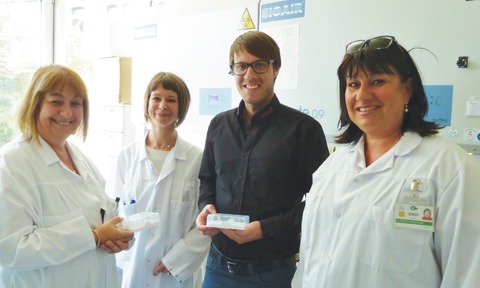
The Institutional Biobank of Lausanne in Switzerland has invested in 2D sample storage consumables from Micronic to safeguard its valuable samples.
The Institutional Biobank of Lausanne (BIL) was created to support clinical research and more specifically research in genomics.
After the sequencing of all local patient samples in the biobank, BIL aims to exploit the genomic and clinical data for specific research projects.
This data will be used to better understand disease, target individuals who respond to treatment (personalised medicine) and identify patients who consent to participate in future clinical trials.
The BIL collection of more than 300,000 human samples is based on five years of preparatory work.
An operational assistant in the Department of Biomedicine at BIL said: “After a careful evaluation of different sample storage consumables we selected Micronic 0.75 ml 2D-coded tubes together with screw caps and storage racks to provide high integrity, long-term storage of our patient blood, serum and plasma samples at –80°C.
“We chose Micronic because of their strong reputation in Biobank sample storage, the good quality of their automation-compatible products and the assured traceability that their laser etched 2D coded tubes provide.”
Manufactured in a fully automated Class 7 cleanroom environment - Micronic 0.75ml sample storage tubes are designed to provide excellent product consistency and near zero contaminants.
Produced from top quality, ultra-pure polypropylene ensures that the storage tubes are compliant with USP Class 6 and European Pharmacopeia tests.
The tubes resist many organic solvents (DMSO, methanol, dichloromethane), may be autoclaved and can be repeatedly freeze-thawed without loss of product performance.
A unique laser etched 2D code on the bottom of each tube provides an easy and unambiguous means of storing and identifying samples.
The optimised internal shape of each Micronic sample storage tube ensures the lowest possible dead volume and maximum sample recovery.
Designed to fit 96 individual tubes into a standard footprint rack optimises use of valuable freezer space and ensures automation compatibility.




